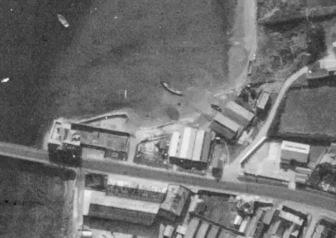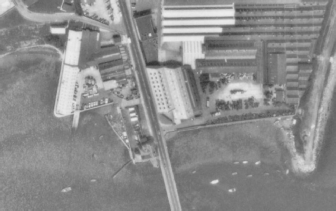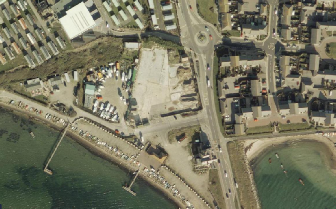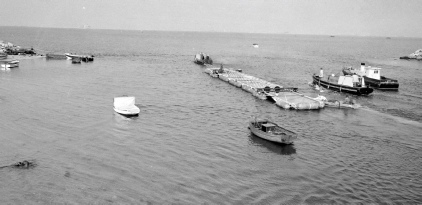Chesil Beach and the Fleet Lagoon
18 miles and 180 billion pebbles
Ferrybridge - W.J.Tod

W.J.Tod ltd, Boatbuilders, started at Ferrybridge in 1932 in a single large wooden shed. They specialised in building 19 and 25 feet wooden boats. These boats proved very popular and a second, more substantial, building soon followed.
During WWII Tods built nearly 200 boats for the navy ranging from small tenders to larger survey craft. One unusual job was to build a full-size model of a submarine that was moored in Portland Harbour as a decoy for enemy attacks. They also built towed rafts for magnetic mine-sweeping that were towed behind a boat with a very low magnetic signature.
After the war Tods moved back to building 19 and 25 feet wooden boats for the leisure market. By 1949 Tods became aware of the use of glass-reinforced plastic (GRP) to build boats and started experimenting with it. Their first commercial craft using GRP was a twelve foot dinghy made in late 1950. Their range of GRP boats proved very popular and by the mid 1950’s they stopped making wooden boats in order to concentrate on their GRP boats. They also diversified into other GRP products for the commercial and defence markets.
The most significant new product was GRP domes for naval sonars. Naval ships mounted sonar systems either along the bottom of the hull or at the bow. In both cases the sonar arrays were protected by plastic domes. These domes have to be very strong to withstand the wave action when the ship travels at high speed or in rough seas. Tods quickly established themselves as world leaders in this technology and went on to supply most of the domes used by the Royal Navy and by a number of other navies around the world. The largest of these domes was a dome for an experimental sonar fitted to HMS Matapan in the 1970’s
The dome business and other GRP-related work was so successful that by 1972 production of standard boats had ceased.
Since then Tods have concentrated on building sonar domes and other GRP-related projects, including railway carriages, cabin fittings and balloon gondolas.
In 2001 it was announced that Tods would pull out of the Ferrybridge site and move to a second site at Crewkerne. Today they are now Tods Defence ltd and are based on Portland. They still make sonar domes and associated fixtures for the Royal Navy and foreign navies.
For more information on Tod’s wooden boats, visit the Wooden Boat Association web page here.
Doug Hollings has written a book ‘All about Ferrybridge’ which includes a chapter on Tods. The book is long out of print but copies sometimes turn up at secondhand book dealers.
For information about Tods Defence Ltd visit their website here.
The earliest aerial photograph of the site is from 1947 where it can be seen that the two original wooden buildings have been joined by a much larger workshop.

By 1972 the large workshop had replaced the original two wooden buildings and a new building has appeared alongside the workshop. This configuration stayed until the company vacated the site.

By 2006 the site had been cleared ready to build the houses that are on the site today.


The site in 2020. Now occupied by housing, an oyster farm and a boatyard.

The HMS MATAPAN sonar dome being towed out of the Fleet and into Portland Harbour.





